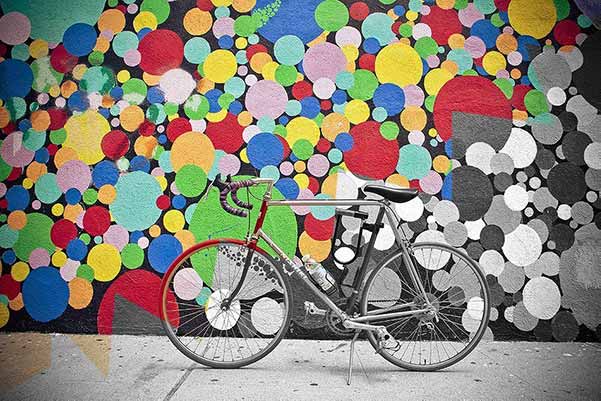
A Become a Swiss Army Knife: Adding to Your skill-set is never a bad thing.
Working in today’s digital marketplace is a constant and ever-evolving landscape. To be successful, you need to adapt and pivot at a moment’s notice. As a graphic designer, photography might not be essential for your work, but it is an incredible tool to have in your arsenal.
Walking on a Tightrope: Balance And Composition
Balance and Composition are two intrinsic elements in taking striking photographs. And the same is true for graphic design. The human brain is not a fan of disorder and chaos, it looks for patterns and does this very quickly. We subconsciously look for patterns and are particularly attracted to numbers of 3. The most dynamic photos, the ones that catch our eyes utilize “The Rule of Thirds” effectively. Remember that as visual artists your mission is to tell a story and connect with the audience. Improving your balance and composition is like wearing the right glasses. The moment you put on the glasses, everything becomes instantly clearer.
3D or Not to 3D, That is The Question: Depth of Field

“Master depth of field and your photos will automatically look much better” –Antoni Cladera
Photographs are great representations of depth and dimension, and even though images are flat, they give the illusion of three dimensions. As graphic designers, in order to stay relevant and keep up with the trends, it is crucial that you have a clear understanding of this concept. Depth of field is particularly effective in focusing the audience’s attention on a specific part of a photo. Used well, the image evokes the notion of a fine Renaissance painting. Placement, focal length, the aperture can all change the way the same image is taken. As a tool for an artist, you can guide your audience and emphasize a specific part of a picture.
Step Into The Light: Light And Dark
Light and dark, or dynamic range is a powerful tool in photography and an asset to have for any graphic designer. Light has the ability to generate mood in an image, it can change the immediate reaction in the audience. By changing the light in the same image you can alter the look, but most importantly the feeling that image creates – it is incredibly effective. Light is the single most important thing to consider in photography, without it there is no photo. As a photographer, you can shape and mold light to achieve something unique. Graphic designers can use this approach to add dimension and emotion.
Rose Are Red, And Maybe Blue: The importance of Colour Science

Understanding colour science is vital for graphic designers. You might use it as separation, to create patterns or generate emotion. Choose the right colours and you can evoke passion in your audience. Colour in photography can accentuate what we see in the frame. Using color correctly helps draw attention to your subject, and therefore creates a powerful visual effect that is pleasing to the eye. As graphic designers, we can use this to our advantage to create powerful images and designs.
Rinse And Repeat: Develop a Strategy That Works
Malcom Gladwell put it well, “it takes 10,000 hours of practice to master a given field.” Who has the time these days for that? The truth is, he is right. The more you do something the better you will get. Photography is part art and part science and as a scientist, you know the best way to do this is through a plan of action or strategy. You are about to run the 100M dash in the Olympics, would you have a cup of coffee and just wing it? Or would you train, eat right and prepare? The choice is simple. Developing a strategic approach that can be replicated, builds your confidence and gets your creative juices flowing.
These are not hard and fast rules, but once you understand them, you can bend and break them to support the story you are telling. Here’s a little secret, being a good photographer will make you a better graphic designer. If you can master these five tips you will be well on your way to becoming that Swiss Army Knife that anyone would be lucky to have. This goes beyond a beginners guide to graphic design. Happy shooting!
About The Author

Private Career College
ABM College is a leader in career-focused education, committed to empowering students with industry-relevant skills. With expert instructors and practical training, ABM College delivers high-quality programs in health, business, technology, and more, ensuring graduates are prepared to meet workforce demands. Known for its supportive learning environment and a focus on real-world application, ABM College is a trusted educational partner helping students achieve professional success across Canada.
